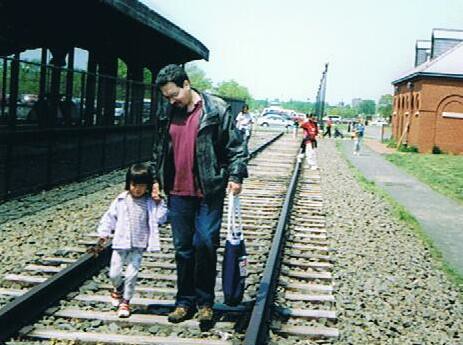|
|
Sunday, January 23rd, 2011
(found in Dorfman's Desert Memories)
Up ahead, to one side of the route, is a gigantic granite hand thrusting up from a slight mound in the desert. Yes, I did say a granite hand and I did say gigantic -- towering twenty or thirty meters high -- a smoth rock statue, this Mano, erected here in 1992 by the Chilean sculptor Mario Irrarrázaval as a way of commemorating the presence of humans on this land, both the Europeans who had arrived in 1492 and those who had made the journey so many millenia before Columbus.Our answer to the desert, that hand.
For more, see Karl Fabricius' writeup of the Hand of the Desert at Environmental Graffiti, with photography from Wikimedia Commons and Flickr.
posted afternoon of January 23rd, 2011: Respond
➳ More posts about Pretty Pictures
|  |
|
So right now I'm reading Ariel Dorfman's Desert Memories -- a fantastic book, one I recommend highly though I have yet to write anything about it -- it is making me think I should start keeping a bibliography of books dealing with northern Chile. This book will serve as the jumping-off point I think, for one thing because this bibliography would be directed towards an English reading audience and the book is written in English (and Dorfman seems like a marvelously interesting figure, certainly worth seeking out the rest of his work); all of Rivera Letelier's work will be on the list with big stars next to it indicating it ought to be published in translation; what else?
- I expect The Motorcycle Diaries includes a lot of time riding through the Atacama and probably belongs on the list.
- Juan Ignacio Molina's Geographical, Natural and Civil History of Chili should be present as background information.
- Andrés Sabella Gálvez's Norte grande.
- The work of José JoaquÃn Vallejo Boscoski (Jotabeche) appears to be seminal to the literature of salitreras.
- Escritores desde el lÃmite describes itself as a blog dedicated to the literature and history of northern Chile; I have not looked at it any further yet.
- Another potential source of information is this article on El salitre en la literatura, from rionegro.com.
- Lessie Jo Frazier's Salt in the Sand. And Dr. Frazier's bibliography is quite huge, and could mostly be incorporated.
- Sergio González Miranda's Ofrenda a una masacre: La emancipación pampina de 1907.
- Wars are popular subjects for fiction and history -- I'm sure there is a good deal of reading to be done about the War of the Pacific.
- Parra's Sermones y prédicas del Cristo de Elqui.
What else? If you've done any reading about the north of Chile, fiction or history ot otherwise, please post in comments. Movies too! (imdb gives me an Argentine film from 1959 called Salitre and a Portuguese short from 2005 of the same title, and a brand-new Mexican documentary called El salitre, esbozo de una historia en fuga. And Patricio Guzmán's Nostalgia de la luz looks well worth watching.)
posted afternoon of January 23rd, 2011: 6 responses
➳ More posts about Desert Memories
|  |
Friday, January 7th, 2011
A tantalizing bit of insight into Rivera Letelier's story-telling abilities is in this review of The Art of Resurrection, by Laura Cardona, book reviewer for La nación:
...As a young man, Rivera Letelier eaves-dropped on the conversations of the adults around him in Algorta, where his mother and his sisters (and likewise, later on, his wife Mari) balanced the family budget by serving meals. Every night, forty or more old miners would come by the house looking for a meal; young Hernán would pass whole evenings under the table, making note of every anecdote.
Cardona got this from Ariel Dorfman's Memories of the Desert, a 2004 account of traveling through the Atacama; she says Dorfman devotes more than a chapter to Rivera Letelier. This book is certainly going on my reading list...
 (Found the Cardona review via Proyecto patrimonio's archive of writings about Rivera Letelier. Found the Dorfman book being remaindered by Amazon marketplace sellers.)
posted evening of January 7th, 2011: Respond
➳ More posts about The Art of Resurrection
| |
|
Drop me a line! or, sign my Guestbook.
•
Check out Ellen's writing at Patch.com.
| |












